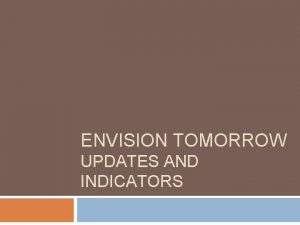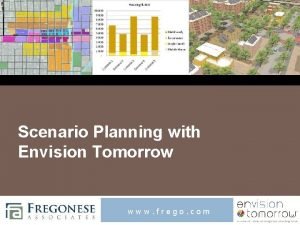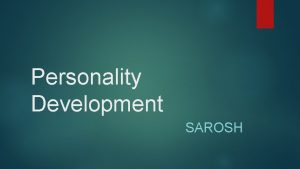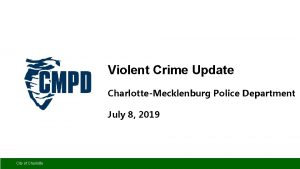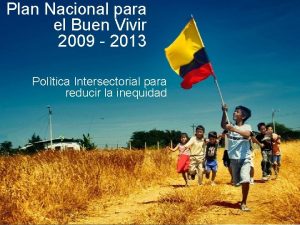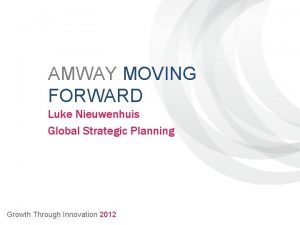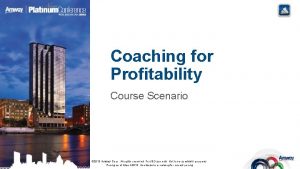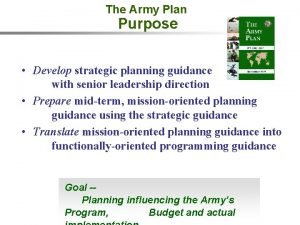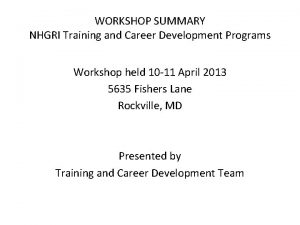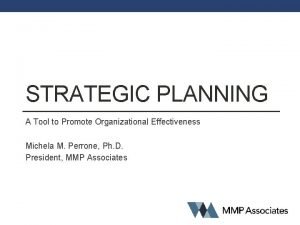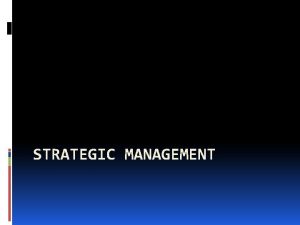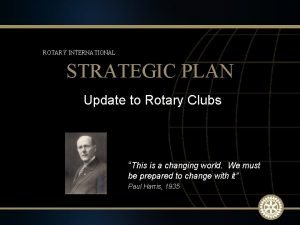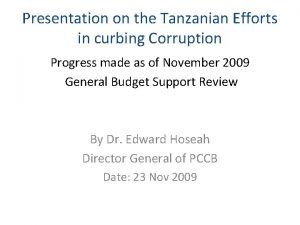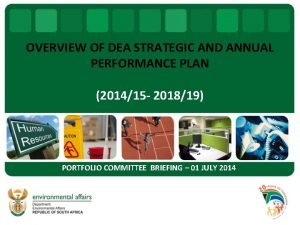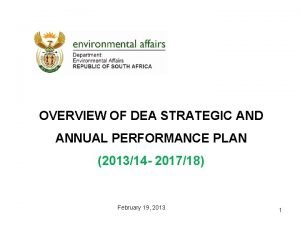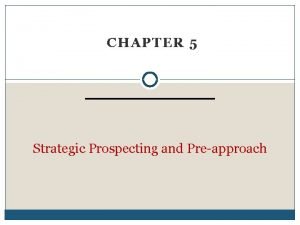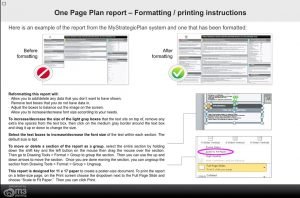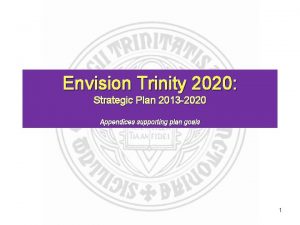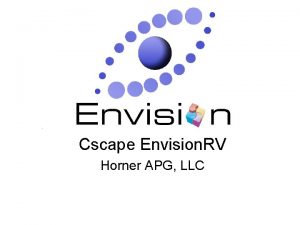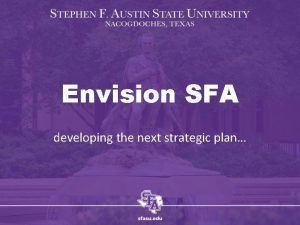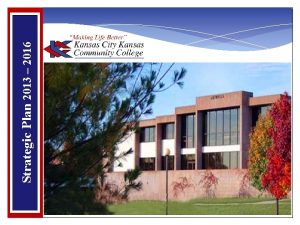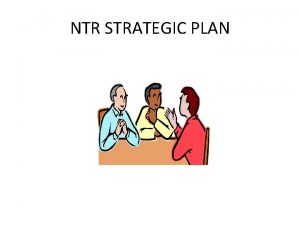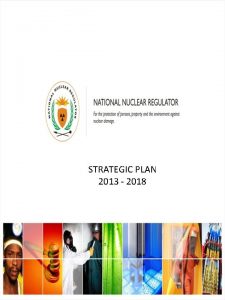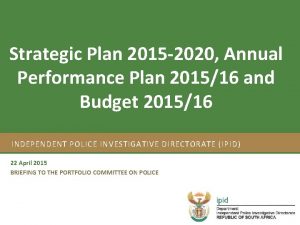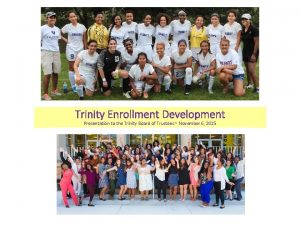Envision Trinity 2020 Strategic Plan 2013 2020 1
































- Slides: 32

Envision Trinity 2020: Strategic Plan 2013 -2020 1

BY THE YEAR 2020 TRINITY WILL: INTRODUCTION Envision Trinity 2020 establishes the framework for institutional, operational and programmatic strategies to fulfill Trinity’s strategic goals. This plan emanates from Trinity’s mission and vision to sustain Trinity as a global model for the education of students, particularly women and men in urban centers, who seek to become leaders for change in their families, workplaces and communities. This strategic plan continues the threads established in Trinity’s prior strategic plans from Toward Trinity 2000 (1992 -1999), Beyond Trinity 2000 (2000 -2006), and Achieving Trinity 2010 (2007 – 2013). Continuing the same format as the prior plans, Envision Trinity 2020 establishes new measurable goals and clear benchmarks for achievement of the goals. Each goal includes a statement of baseline measurements in the Year 2013 and establishes annual progress goals and ultimate strategic goal targets for 2020. • • • Enroll 3500 students in all units and programs Meet or exceed financial benchmarks Offer fully enrolled programs in each academic unit that meet or exceed contemporary academic and professional standards for outcomes, delivered in all contemporary formats and meeting benchmarks for retention and completion Sustain a fully digital and virtual campus with pervasive portable technologies facilitating delivery of instruction and services across all units and departments, reaching students and graduates worldwide Employ a body of faculty and staff of the size and capacity necessary to deliver the quality and scope of programs and services Have an administrative structure, leadership and management capacity sufficient to ensure effective delivery of Trinity’s programs and services Create and manage a body of intellectual and informational resources adequate to support the academic enterprise and that also contribute significantly to the advancement of knowledge in the respective disciplines Be a national model for exceptional services to students and the larger community Meet or exceed external standards for quality and outcomes Operate in a new academic center, upgraded Main Hall and residential facilities, and have a plan in 2 place for library redevelopment

STRATEGIC PLANNING DESIGN STRATEGIC ENROLLMENT GOAL (Goal 1) BASELINE 5 -YEAR FINANCIAL MODEL (Goal 2) Enrollment Drivers PROGRAMS (Goal 3) TECHNOLOGY (Goal 4) CAPITAL CAMPAIGN PLAN (Goal 2) Financial Drivers PEOPLE CAPACITY (Goals 5 -6) SERVICE REPUTATION INTELLECTUAL OUTPUT (Goals 7 -8 -9) FACILITIES (Goal 10) 3

TRINITY STRATEGIC PARADIGM 2016 SCHOOL OF EDUCATION COLLEGE OF ARTS & SCIENCES School of Business and Graduate Programs SCHOOL OF NURSING AND HEALTH PROFESSIONS SCHOOL OF PROFESSIONAL STUDIES 4

Trinity’s Strategic Vision Proceeding from mission, Trinity’s vision anticipates developing the institution as a mid-sized university (3, 500 students) with a distinctive focus on the educational needs of women and men across all ages and economic circumstances, with a particular emphasis on education for students in the Washington metropolitan region. Trinity sustains its historic emphasis on women’s leadership and advancement even while expanding its reach to include men in all professional programs. Trinity’s programs and services incorporate these values that emanate from Trinity’s mission as a Catholic institution infused with the values of the Sisters of Notre Dame de Namur: • A Value-Centered Education infused with the principles of social justice, honor and integrity will continue to characterize Trinity’s learning environment and programs; • Ensuring Access to Educational Opportunities will continue to arise from that social justice value center, such that Trinity will continue to develop its curricula and programs in ways that provide opportunities for educational attainment for students who might otherwise not have had such opportunities to succeed academically; • Respect for Human Dignity will continue to characterize Trinity’s campus life through honoring the broad diversity of races, ethnicities, cultures, languages, abilities, beliefs and interests of Trinity’s student body; • Academic Excellence and Rigor will continue to characterize the expectations and work of the faculty with all student populations, with a clear focus on educational outcomes that can demonstrate the quality and durability of a Trinity education through many different occupations and life circumstances; • Women’s Leadership Development will continue to be a distinctive characteristic of all Trinity educational programs; • Education for Global Leadership will continue as Trinity’s theme to signify the global perspective that Trinity expects its students and graduates to manifest in order to be true leaders in contemporary communities, corporations, schools and public arenas; • Service to Others will continue as a strong focus of Trinity’s programs and leadership development philosophy; • Educating Children Well will continue to be a particular emphasis of a Trinity education, not only in the School of Education but through all programs that lay the foundation for successful teaching, parenting and role modeling for the next generations of citizen leaders. 5

Trinity Mission Statement Trinity is a comprehensive university offering a broad range of educational programs that prepare students across the lifespan for the intellectual, ethical and spiritual dimensions of contemporary work, civic and family life. Trinity’s core mission values and characteristics emphasize: ØCommitment to the Education of Women in a particular way through the design and pedagogy of the historic undergraduate women’s college, and by advancing principles of equity, justice and honor in the education of women and men in all other programs; ØFoundation for Learning in the Liberal Arts through the curriculum design in all undergraduate degree programs and through emphasis on the knowledge, skills and values of liberal learning in all graduate and professional programs; ØIntegration of Liberal Learning with Professional Preparation through applied and experiential learning opportunities in all programs; ØGrounding in the mission of the Sisters of Notre Dame de Namur and the Catholic tradition, welcoming persons of all faiths, in order to achieve the larger purposes of 6 learning in the human search for meaning and fulfillment.

Strategic Goal 1: Enrollment Original Goal: NEW GOAL: • By the Year 2020 Trinity will enroll 3, 500 students in degree programs: • By the Year 2010 Trinity will enroll 3000 students in degree programs as follows: 600 undergrad students in the College of Arts and Sciences • 750 graduate students in the School of Education • 1, 650 students in the School of Professional Studies including: • 200 in Associate Degree Programs • 200 in Health Professions Programs • 800 in general baccalaureate Program • 200 in the MBA Program • 250 in other graduate programs • 1, 155 full-time undergraduate women students in the College of Arts and Sciences • 625 graduate students in the School of Education • 1, 220 part-time students in the School of Professional Studies including: 90 in Associate Degree Programs 640 in general baccalaureate Program 135 in the MBA Program 355 in other graduate programs • 500 undergraduate and graduate students in the School of Nursing and Health Professions, including: 200 in prelicensure BSN and RN-BSN programs 120 in MSN programs 80 in Occupational Therapy Assistant program 90 in Occupational Therapy Master’s program Analytics behind these goals available in supplementary 7 materials.

NUMBER OF STUDENTS Actual 3553 Projected 3409 3486 3153 3005 2664 2555 2714 2859 2506 2305 2034 1645 1637 1659 1618 1605 1640 1736 1327 8

STRATEGIC ENROLLMENT PLANNING Headcount 2013 -2020 STRATEGIC ENROLLMENT MODEL SHOWING TOTAL FORECASTS BY ACADEMIC UNITS AND DEGREE LEVELS AS OF 8 3 2013 FISCAL 2013 Fall 12 Act CAS Sp 13 Act 1038 FISCAL 2014 Fall 2013 969 SP 14 1079 FISCAL 2015 Fall 2014 1019 SP 15 1158 FISCAL 2016 Fall 2015 1048 FISCAL 2017 SP 16 Fall 2016 1178 1048 FISCAL 2018 SP 17 Fall 2017 1183 1110 SP 18 1227 FISCAL 2019 Fall 2018 1150 FISCAL 2020 SP 19 Fall 2019 1250 1170 FY 2021 SP 20 Fall 2020 1267 1128 1220 SPS AA 82 77 83 82 100 97 98 95 100 90 102 86 95 75 86 79 90 SPS UG 518 479 470 445 427 410 407 405 414 450 530 515 585 638 SPS GR 249 222 206 241 255 280 301 287 310 306 330 353 330 335 355 95 82 78 77 98 100 110 106 105 108 110 109 110 125 135 SPS MBA NHP NRS 248 NHP OTA NHP OTM NHP RNMSN EDU TOTALS 434 213 192 169 150 135 122 200 177 155 140 125 223 216 205 200 205 10 29 46 54 70 75 75 70 65 62 60 67 68 75 75 80 30 55 70 75 90 90 104 105 128 118 105 97 88 98 105 100 103 105 115 133 125 129 120 113 125 117 30 401 369 2664 324 2453 2506 344 2433 364 2714 395 2681 410 2859 2806 460 450 3005 2903 495 480 3153 525 3011 530 3409 3252 595 570 3486 3319 625 3553 9

Strategic Goal 2: Finances Original Goal: Coordinate with Strategic Goal 1 – Enrollment, Trinity has created a five-year financial model with analytical detail on revenues and expenses related to the enrollment goals. This model is a companion document to this strategic plan. Trinity will use the Critical Financial Monitoring System to benchmark financial performance against these strategic financial goals for Trinity 2010: • • • Measure Benchmark Annual Operating Margin Greater than 2% (Moody’s) Return on Net Assets Greater than 8% (Moody’s) Viability Ratio Greater than 1% (Moody’s) Direct Debt to Total Capitalization Less than. 3 Cushion Ratio Not less than 4. 0 (Bond Covenant) Debt Service Coverage Not less than 1. 0 (Bond Covenant) Bad Debt Not to Exceed 2. 5% of receivables Ratio 5% improvement per year Tuition Dependence Not greater than 80% New Goal: A. Financial Performance Goals: (ratios in this section based on academic center financing package covenants and also taken from strategic financial ratios and BE CFR, see next page for illustration of one benchmark) B. Fund Raising Goals: 1. Annual Fund a) Total goals over 5 years b) Progressive percentage improvements in participation rates c) Progressive improvements in annual gift sizes d) Reunion giving e) Volunteer organization 2. Major and Capital Gifts a) Special Projects b) Programs c) Scholarships d) Infrastructure e) Private Grants f) Governmental (Supplementary materials will show analysis supporting goals statements) 10

11

Strategic Goal 3: Program Development ORIGINAL GOAL 2010: In keeping with the results of self-study and market research, Trinity will develop its curricula and programs to support the goals for enrollment growth as follows: College of Arts and Sciences: Reform of general education (FLC) content and pedagogy to ensure the knowledge, skills and competencies required for new generations of students and contemporary needs of the workforce; Development of a more rigorous focus on demonstrable outcomes of undergraduate education for urban learners as a means of demonstrating Trinity’s success and competitive market posture, with a particular emphasis on developing Trinity’s reputation for excellence in writing, quantitative skills, information and technological literacy, global perspective and communication abilities; A more distinctive expression of Trinity’s commitment to developing women’s leadership abilities through the women’s college model, with an emphasis on transformational leadership modalities learned through service and applied learning in the co-curriculum, including development of a leadership transcript with learning objectives in student government, community service, athletics, publications and other student co-curricular learning; Development of key programs that can serve as organizing forces for multiple disciplines: Intelligence Studies, Health Professions, Psychology and Human Relations, Business and Economics, Communication; Development of key curricular and co-curricular programs of great interest to specific market segments: Honors Program; Athletics; Women’s Leadership; Incorporation of web-enhanced instruction and other new pedagogies that can enhance student learning and improve student success. New Goal 2020: In keeping with the results of self-study and market research, Trinity will develop its curricula and programs to support the goals for enrollment growth as follows: College of Arts and Sciences: a) Project Completion: a comprehensive approach to improving retention, persistence and timely degree completion through delivery of advising and support services aligned to student needs, risk factors and incentives b) First Year Experience: a revised FYE program, based on assessment results of the existing FYE program, will improve first-to-second year retention from 54% in Fall 2013 in progressive increments to achieve 75% as a consistent target by 2017 and hold or improve from that target by 2020 c) Sciences: with the new academic center and participation in the Clare Boothe Luce Program, Trinity will improve science enrollments significantly and to expand the institutional reputation for excellence for women and minorities in Math and Science. d) Behavioral Sciences e) International Affairs, Politics and Government f) Business 12

Strategic Innovation Initiatives: COLLEGE OF ARTS AND SCIENCES Initiative Action Step Target Start Current Gain Year 1 Gain Year 2 Gain Year 3 First Year Retention Implementation of case management approach Create Center for Academic Success, including case management and attention to Center for Success in Foundational Teaching (Fall 2014 -Spring 2015) Reimagine advising and comprehensive approach to retention for first to second year (ongoing, with new First Year experience launching Fall 2014) Ongoing with specific start dates for each action step 54% FY retained fall to fall (162/297) 65% (260/400) (+20 over current) 70% (280/400) (+40 over current) 75% (300/400) (+60 over current) Early Childhood Education Institutional Approvals Recruit for Major Launch initiative Fall 2014 0 (53 students identified as intending to major in Education) 15 20 30 Science Pedagogy Leverage Luce Program Relationships Emphasize undergraduate research opportunities with faculty as appropriate Support expansion of innovative science pedagogies Fall 2013 Psychology / Counseling Cluster Launch new Human Relations programming Launch CAS Psychology program to EDU Counseling program articulation Fall 2014 107 (79 HUMR majors; 28 PSYC majors) + 10 (117 majors) +15 (132 majors) +20 (152 majors) International Affairs Create strategic program plan incorporating interdisciplinary approaches involving political science, history, and social sciences Create glide path for master’s level programming at Trinity Develop and market reenvisioned major Fall 2014 6 majors +10 (16 majors) +20 (26 majors) +25 (61 majors) Emphasis on Excellence: Succeeding at Trinity Continue building Honors program and opportunities for curricular initiatives of excellence Create and sustain Undergraduate Research Focus Group Emphasize opportunities for advanced academic and experiential initiatives working with Career Services and Experiential Learning Spring 2014 53 +10 (63 Honors students) +15 (78 Honors students) +20 (98 Honors students) Business Administration Create strategic program plan Identify links with regional business and clinical opportunities Align personnel capacity with areas of emphasis Fall 2014 30 majors +10 40 majors +20 60 majors +25 85 majors 13

Strategic Goal 3: Program Development ORIGINAL TEXT 2010: School of Professional Studies: Development of a more distinctive focus on undergraduate education for adult professional learners, including reform of general education and pedagogy to align learning goals in that curriculum with the totality of the student’s learning objectives for professional advancement; Development of a comprehensive network of student services particularly designed for adult learners, with an emphasis on the use of technology to deliver advising and services via web tools and other access points that enhance convenience for the students; Development of key programs that will build enrollments in the professional disciplines and with credentials for working students, including: • • • Nursing and Health Professions Sports-related Academic Programs Information Technology Business Administration Associate Degree Programs Master’s Programs Development of off-site and employer-based programs, including increased programming in southeast Washington at THEARC, establishing locations in downtown Washington, and exploring site potential in Maryland Virginia. New Goal 2020: School of Professional Studies: a) Undergraduate Business Administration (1) Accounting (2) Human Resource Management (3) Hospitality and Hotel Management b) Education (1) Early Childhood Education AA and BA degrees c) Criminal Justice d) Media Studies e) Online and Off-site 14

Strategic Innovation Initiatives: SCHOOL OF PROFESSIONAL STUDIES Initiative Action Step Target Start Current Gain Year 1 Gain Year 2 Gain Year 3 Strengthen Undergraduate Business Program Create strategic plan Create innovative focus tracks and clinics (Accounting, Hospitality, HR) Align faculty capacity with program tracks. Design and Implement new programs Spring 2014 94 BS +50 144 majors +100 194 majors +150 244 majors In partnership with the School of Education, launch Early Childhood Programs Create Strategic Plan Create AA and BA programs Design & Implement new programs Spring 2014 O students +70 AA +25 BA + 100 AA +50 BA +200 AA +75 Strengthen the Undergraduate Human Relations Program Create strategic plan Create innovative focus tracks and clinics (Pre-Social Work, Human Services) Design and Implement new programs Fall 2014 100 BA +25 125 majors +50 150 majors +75 175 majors Strengthen the Undergraduate Criminal Justice Program Create strategic plan Create innovative focus tracks and clinics (Forensic Science/ Investigation) Design and Implement new programs Fall 2014 80 BS +20 100 majors +50 130 majors +75 155 majors Strengthen the Undergraduate Communications Program Create strategic plan Create innovative focus in media studies and digital journalism Design and Implement new programs Fall 2014 TBA TBA Hybrid, Online and off-site courses Increase SPS capacity to create and deliver online Improve faculty skills in working with Moodle and online instruction. Develop strategic partnerships Identify additional programs and courses for hybrid delivery. Locate offsite locations Ongoing – need to set a specific goal for next 3 years. Attend to MSCHE off-site issues and gain permissions Identify benchmarks for how this will impact enrollment 15

Strategic Goal 3: Program Development ORIGINAL GOAL 2010: New Goal 2020: At the time of the last strategic plan we did not anticipate creating the separate School of Business and Graduate Programs. This new unit will provide greater administrative and faculty capacity to ensure the quality of the graduate programs in this unit. School of Business and Graduate Studies: This new academic unit will provide the administrative infrastructure and faculty personnel necessary to achieve excellence in professional graduate programs, including: a) Masters in Business Administration b) Master of Science in Administration c) Media Studies and Communication e) International Security Studies 16

Strategic Goal 3: Program Development ORIGINAL GOAL 2010: New Goal 2020: School of Education: Development of a more distinctive focus on the preparation of teachers leaders for urban school settings; Creation of an online master’s degree for teachers, and development of online and web-enhanced capacity for teacher professional development; Further development of the Educational Technology Leadership Institute with a specific focus on developing credentials (certificate and degree) for master teachers in the field of educational technology; With NCATE accreditation, expansion of the market for students in EDU beyond the immediate school systems (DC, Prince Georges, Montgomery County) to recruit teachers and administrators from other jurisdictions; To enhance more regional and national recruiting, development of executive-format summer and weekend programming in select topics to provide convenient formats for target populations. a) Early Childhood Education (1) Collaboration with SPS and CAS on undergraduate degrees (2) Strengthen MAT ECE focus (3) Add emphasis in EDAD on ECE management b) Education Policy c) Counseling (1) CACREP Accreditation d) New regulatory and accreditation issues for teacher education e) Online and off-site 17

Strategic Innovation Initiatives: SCHOOL OF EDUCATION Initiative Action Step Target Start Current Gain Year 1 Gain Year 2 Gain Year 3 Strategic Plan for future of EDU Data Analysis of current and visioning for future programs Faculty + Admin articulation of strategic priorities and goals Proposals for new programs with a focus on increasing enrollments Analysis and Visioning – underway, new Dean appointed 367 total enrollment in EDU + 40 407 + 40 447 + 50 497 Enlarge Counseling Program Data analysis and visioning new tracks to develop strategic plan to diversify program Apply for CACREP accreditation (needed for our graduates who want to work in the Veterans Administration) Build faculty capacity to align with new program tracks CACREP application in spring 2014 125 L 29 S +25 179 +30 204 +50 254 Develop BA in CAS Psych to MA in Counseling glidepath Promote opportunity Review applications Applications accepted from juniors during 2013 -14 academic year First undergraduates in MA classes fall 2014 +5 +10 +15 18

Strategic Innovation Initiatives: SCHOOL OF EDUCATION (continued) Initiative Action Step Target Start Current Gain Year 1 Gain Year 2 Gain Year 3 Enlarge Early Childhood Education Add BA in ECE in CAS Enroll first students in BA and AA in ECE in SPS Build faculty capacity Spring 2014 for SPS programs +70 +340 410 +230 640 Revise MAT Program Data analysis of markets for existing concentrations, explore possibility of urban residency program Refocus concentrations on growth areas/strategic plan, evaluate combination programs (ECE/SPED etc. ) Build faculty capacity in growth areas, explore grant opportunities Fall 2013 26 ELED 5 SENG 21 SPED 3 SECSS 7 TESOL Create Master’s in Educational Policy Market analysis Develop strategic plan Hire faculty leader Fall 2014 0 20 +20 40 +25 65 School Leadership Program Data analysis and strategic plan; consider partnership e. g. NLNS Add tracks for new focus areas, develop hybrid and online course offerings Develop faculty capacity Fall 2014 61 +20 81 +20 101 +30 131 Develop and enhance partnerships Data analysis and benchmarking to maximize current partnerships and identify possible new partners Exploration of funding opportunities Analysis of current program offerings to align with desired partnerships Partnership with NL has begun, Expanding partnership with KIPP a high priority NL 1 or 2 Identify new programs in human services Market analysis Target new program area based on data Develop strategic plan Fall 2014 0 25 +25 50 +50 100 Continuing Education Program Market analysis of existing program and future potential Target new areas of opportunity Develop strategic plan Spring 2014 2, 642 1, 000 3, 642 1, 150 4, 792 1, 000 5, 792 19

Strategic Goal 3: Program Development ORIGINAL GOAL 2010: Original plan did not anticipate creating NHP. We subsequently did create the unit because of the potential enrollment growth as well as the considerable academic and administrative demands of health program accreditations that require a very different kind of academic and administrative capacity from other programs. New Goal: School of Nursing and Health Professions: a) Improving NCLEX performance in prelicensure program b) Expanding RN-BSN partnerships c) MSN d) Occupational Therapy OTA and MSN build-out e) Online opportunities f) Other Allied Health 20

Strategic Innovation Initiatives: SCHOOL OF NURSING AND HEALTH PROFESSIONS Strengthen NCLEX Performance Require ATI test materials in all courses Strengthen admissions standards for Nursing Program Strengthen graduation requirements to ensure student ability to pass NCLEX Fall 2012 191 pre-licensure nursing students April, 2013 Status ATI test materials required in all nursing courses; minimum cutoff established for successful course completion; On-campus writing included in admission process; Establishing comprehensive exam requirement for graduation Fall Nursing enrollment = 190 Expand RN-BSN Create partnerships with healthcare providers for on-site delivery Ensure compliance with accreditation requirements Planning underway Implement – 2013 -2014 + 25 Letter of Intent to offer classes at VA approved. MSCHE approved off-site delivery. Expand capacity to delivery hybrid and online 50 RN-BSN students for 2013 -2014 VAMC enrollment insufficient to begin 35 RN-BSN enrolled in cohort off-site in Fall 2013 Articulation agreement with Montgomery College Nursing Associate Degree program in signature phase. Implement in spring 2014. Develop MSN Create program plan *program outline created Align faculty capacity with program plan Secure accreditation approvals Planning underway Implement 2014 -2015 +30 Proposal in progress. Enrollment start date Fall 2014 Develop OTA Enrollments Improve alignment with CAS Strengthen recruiting with providers Improve marketing materials Immediate +15 25 Alignment with CAS with HUMR BA Added OTA to admission advertisements Internal marketing educating students about OT +19 for Fall 2013; total enrollment 29 Create OT Masters Create program plan Align faculty capacity with program plan Secure accreditation approvals *Letter of Intent submitted Fall 2014 0 Submitting a revised timeline to ACOTE Received ACOTE confirmation on 3/7/2013 that Trinity OT Masters Program Letter of Intent was submitted via ACOTE electronic portal. Projected enrollment start date delayed until August, 2015 or 2016. Program director hire needed for startup. Identify Additional Allied Health Program Opportunities Assessment of industry needs in cooperation with area healthcare providers *early stages Identify new program potential Create program potential analysis showing likely enrollment gains, investments and returns Ongoing 0 Physician Assistant 21

STRATEGIC INNOVATION INITIATIVES COLLEGE OF ARTS AND SCIENCES • • Retention Initiatives and Project Completion First Year Program Forensic Science Pedagogy and Undergrad Research Initiatives Psychology articulation to MA in Counseling Human Relations link to Master’s in Counseling International Affairs and Government Business Administration SCHOOL OF NURSING AND HEALTH PROFESSIONS • • Occupational Therapy including MOT RN-BSN expansion including articulation agreements MSN and online opportunities Other Allied Health opportunities & partnerships SCHOOL OF EDUCATION • • Transformation for K-12 Teacher Education Reform Partnership Early Childhood Education School Leadership Educational Policy Human Services and Behavioral Sciences CACREP Accreditation Online Opportunities SCHOOL OF PROFESSIONAL STUDIES • Hospitality, Accounting and Human Resource concentrations in BS in Business Media Studies: Masters and Baccalaureate Pathways for Professional Student Success Online Opportunities • • • 22

Growth Scenario with Academic Strategic Initiatives Model not intended as a forecast but simply an illustration of how strategic program initiatives in each academic school can drive growth 3500 Numbers beside sandwich part of column show total potential additional enrollments from the program initiatives represented by the sandwich layers. 2012 baseline enrollments are held in steady-state to illustrate growth of new programs over and above current enrollments. 115 3414 3209 135 NHPOTA 3094 105 3000 248 248 2664 NHP 120 SPSMSA SPSISS 248 944 SPSMEDIA SPSBUA SPSMBA 944 2000 NHPMSN NHPRNBSN 185 110 2500 NHPOTM SPS 944 EDUHUMS 185 EDUADM 120 110 EDUMEP 1500 434 434 EDUCOUN 434 EDU 245 190 105 1000 EDUECE CAS BUA CAS INAF CAS HRL CAS PSYCH 500 1038 CAS CRIMJUST CAS MEDIA CAS FORENSIC CAS RETENTION CAS 0 2012 YEAR ONE YEAR TWO YEAR THREE 23

Strategic Goal 4: Technology ORIGINAL Goal 2010: New Goal 2020: Trinity will maintain a “state of the art” campus technological environment, including: Trinity will sustain a technological environment that promotes academic excellence and innovation; effective, pervasive use of contemporary tools for research, communication and instructional delivery; and operational efficiency and effectiveness. • • To support the curricula and academic programs: increasing the availability and use of new technology in the learning environment to enhance the educational experience, including expansion of online and web-enhanced learning, and further development of Smartrooms and other academic technologies; Development of the Library and Information Resource plan with a greater reliance on the use of technological tools for learning and research; • Improvement and expansion of the Trinity website and web tools to increase communication and interactivity to support enrollment, advising services, instructional delivery, marketing and communication among all constituencies; • Maintaining a central depository for all organizational units and continue to enhance the system capabilities for growth and promotion of the institution; sustaining and modernizing the current data center infrastructure to account for the increased demand for information and to ensure data integrity; • Development of faculty and staff educational opportunities to keep the workforce apace with technological developments. A. Technology Infrastructure Trinity’s technology infrastructure will meet contemporary standards for academic institutions of Trinity’s size and programmatic profile. The technology management plan includes specific annual goals and benchmarks for: 1. System Reliability 2. Network Capacity 3. Hardware and Software acquisitions 4. Data Storage 5. Disaster Recovery 6. Sustainability 7. Connectivity 8. Telephony 9. Customer Satisfaction (continued next page…. . ) 24

Strategic Goal 4: Technology ORIGINAL Goal 2010: New Goal 2020: (continued…. ) Trinity will maintain a “state of the art” campus technological environment, including: B. Academic and Instructional Technology • • • To support the curricula and academic programs: increasing the availability and use of new technology in the learning environment to enhance the educational experience, including expansion of online and web-enhanced learning, and further development of Smartrooms and other academic technologies; Development of the Library and Information Resource plan with a greater reliance on the use of technological tools for learning and research; Improvement and expansion of the Trinity website and web tools to increase communication and interactivity to support enrollment, advising services, instructional delivery, marketing and communication among all constituencies; Maintaining a central depository for all organizational units and continue to enhance the system capabilities for growth and promotion of the institution; sustaining and modernizing the current data center infrastructure to account for the increased demand for information and to ensure data integrity; Development of faculty and staff educational opportunities to keep the workforce apace with technological developments. Trinity’s academic and instructional technology environment will ensure excellence and innovation in academic programs, pedagogies and research. The academic technology management plan includes specific goals and benchmarks for: 1. Moodle Course Management System a) Goal: %% adoption for all courses b) Goal: proficiency levels for course websites c) Goal: proficiency levels for faculty use of Moodle 2. Technology in Pedagogy a) Goal: basic, advanced, creative use of tech tools. . . b) Goal: ability of faculty to develop digital objects, e. g. , use of video, simulation, GIFs, etc. developed by faculty 3. Student Academic Support a) use of tech tools for early warning b) tutoring and special instruction 4. Online Course and Program Delivery a) Hybrid b) 100% online 5. Library and Research Resources (continued…) 25

Strategic Goal 4: Technology ORIGINAL Goal 2010: New Goal 2020: (continued…. ) Trinity will maintain a “state of the art” campus technological environment, including: C. Data and Information Technology and Assessment • Recognizing that sustaining a culture of assessment requires strong data and information technology, Trinity will build advanced capacity for data and information management across all institutional levels and programs in order to ensure the maximum use of assessment tools to inform institutional decisions and future initiatives. To support the curricula and academic programs: increasing the availability and use of new technology in the learning environment to enhance the educational experience, including expansion of online and web-enhanced learning, and further development of Smartrooms and other academic technologies; 1. Institutional Research • • Development of the Library and Information Resource plan with a greater reliance on the use of technological tools for learning and research; Improvement and expansion of the Trinity website and web tools to increase communication and interactivity to support enrollment, advising services, instructional delivery, marketing and communication among all constituencies; • Maintaining a central depository for all organizational units and continue to enhance the system capabilities for growth and promotion of the institution; sustaining and modernizing the current data center infrastructure to account for the increased demand for information and to ensure data integrity; • Development of faculty and staff educational opportunities to keep the workforce apace with technological developments. 2. Management Capacity 3. Academic Assessment Capacity D. Communications, Website and Social Media E. Faculty and Staff Development 26

Strategic Goal 5: Human Resources ORIGINAL GOALS 2010: NEW GOALS 2020: (needs further revision) For the Faculty: Trinity will develop its human resources to achieve the levels of performance quality in all areas that are necessary for institutional success. • A. Faculty • • Alignment of the size of the full-time and part-time faculty in each school to the size of enrollments in programs, consistent with disciplinary standards Continuing improvement in full-time faculty compensation aligned with benchmarks; Creation of a compensation plan for adjunct faculty that recognizes and sustains academic talent; Development of a more comprehensive faculty development program Development of the Faculty Handbook policies in relation to contemporary realities for workload, delivery systems, technological innovation and professional development. For the Staff: • • Continuing development of the staff performance assessment system Continuing development of the staff professional development programs to improve staff knowledge, skills and competencies in supervision and management, technology and applications, teamwork and project planning, Development of the Wage and Salary Plan to provide greater flexibility in the recognition of staff performance tied to goals; Promotion of a climate for innovation and crossfunctional teamwork among all administrative departments, and with faculty, to improve Trinity’s ability to recruit and retain students successfully. Alignment of the size of the full-time and part-time faculty in each school to the size of enrollments in programs, consistent with disciplinary standards and industry benchmarks for program staffing; Continuing improvement in full-time faculty compensation aligned with benchmarks; Creation of a compensation plan for adjunct faculty that recognizes and sustains academic talent; Development of a more comprehensive faculty development program to provide continuous education in pedagogy, curriculum reform, classroom management techniques, research and scholarship, use of technological tools, and ongoing professional enhancements for the faculty; Development of the Faculty Handbook policies in relation to contemporary realities for workload, delivery systems, technological innovation and professional development. B. Staff Continuing development of the staff performance assessment system including production of management data based on assessments that provide targets for staff development and compensation planning; Continuing development of the Trinity Institute staff professional development programs to improve staff knowledge, skills and competencies in supervision and management, technology and applications, teamwork and project planning, and related skill sets; Development of the Wage and Salary Plan to provide greater flexibility in the recognition of staff performance tied to goals; • Promotion of a climate for innovation and cross-functional teamwork among all administrative departments, and with faculty, to improve Trinity’s ability to recruit and retain students successfully. 27

Strategic Goal 6: Management Capacity ORIGINAL Goal 2010: • • With the leadership of each academic dean, a plan for the development of academic advising and other services to support each academic unit will specify the additional knowledge, skills and competencies necessary to manage the units successfully in fulfillment of unit performance goals; With the leadership of the senior executive staff, every subsidiary division and department will specify in their annual plans the knowledge, skills and competencies necessary to manage each division and department successfully in fulfillment of performance goals; Supervisors will receive ongoing education and training in management techniques to improve their ability to focus on achievement of goals and objectives; Senior managers and executives will also participate in ongoing education and training to improve their ability to lead the staff and faculty teams to fulfillment of all goals. New Goal 2020: • Trinity’s organizational design supports five major academic units with appropriate leadership and administrative capacity aligned with the size of each student body; • Trinity’s central administration design provides the capacity to manage all dimensions of contemporary university administration; • Each academic unit, central administrative divisions and the respective subordinate departments will create annual plans that specify goals and objectives tied to the institutional strategic plan, and such plans will provide the basis for annual resource allocation and budgeting; • Each annual plan will provide the key performance indicators, data baselines and outcomes sufficient to assess the effectiveness of the units and plans, and specify changes in operations resulting from the assessments; • Annual plans will also address ongoing growth and development of management and administrative capacity in each unit.

Strategic Goal 7: Intellectual and Informational Resources ORIGINAL Goal 2010: Trinity will increase its attention to scholarly and professional productivity in these ways: • Establishment of a clearinghouse for faculty and staff access to the scholarly and professional development work of colleagues • Creation of a more distinctive focus on the importance of active contributions to the knowledge base • Identification of specific incentives to improve intellectual productivity • Enhance institutional focus on the development of the informational resources necessary to support the teaching and learning enterprise • With the leadership of the Librarian and Vice President for Academic Affairs, Trinity will establish an annual operational plan for the acquisition, maintenance and use of library and informational resources, and general collection development; • With the leadership of the Librarian, Vice President and President, Trinity will develop a strategic plan for the development of the Library and its resources that reflects the best thinking of contemporary academic libraries, and this plan will guide the development of the University Academic Center’s library and information resource components. NEW GOAL 2020: • To support and enlarge Trinity’s academic capacity and reputation, Trinity will develop, produce, acquire and make broadly available the intellectual and informational resources necessary to support all teaching, learning and scholarly activities on campus, and to share Trinity’s professional and scholarly outcomes with the larger community • • Library and Intellectual/Informational Resources Trinity’s strategic library plan will align Trinity’s curriculum and academic programs with the intellectual and informational resources necessary to support learning and research according to the academic strategic plans. The Library plan will emphasize the robust use of technology and access to virtual resources as broadly as possible. The Library plan will include a vision for the future of the physical space and collections on campus in relation to the development of virtual resources and a deep understanding of the ways in which faculty, students and other patrons will use libraries broadly through the 21 st Century. The library plan will also include consideration of the ways in which Trinity’s library serves the greater D. C. community. • • • Scholarly and Professional Contributions Trinity’s students, faculty and staff will make significant contributions to research and public discussion in their disciplines and areas of professional expertise. 29

Strategic Goal 8: Service to Students and the Community NEW GOAL 2020: ORIGINAL Goal 2010: • • • Trinity will extend its educational and service talent to children, families and adults in neighborhoods, schools, civic organizations and other locations in the District of Columbia and the Washington Region. • Trinity will provide vital support services to students, faculty and staff in the campus community, as well as to neighbors and residents of D. C. and the larger Washington community. • Student and Campus Services: Trinity will provide a robust range of services for all campus populations. Each service department and program will provide an annual plan with service goals and objectives, resources required an assessment plan, including: Through the Trinity Center for Women and Girls in Sports, Trinity will continue to offer wellness, fitness, recreational, educational and athletics programs and services to the larger Washington community as well as to the campus community; the annual plan for the Trinity Center includes measurable goals for these services; For the campus community, Trinity will create annual plans with measurable goals for service delivery and effectiveness, and customer satisfaction, in these areas for all schools: – – Academic Support Services, Health Services, Campus Ministry, Residence Life Student Government , Student Activities Enrollment Services Food Service, Bookstore, Facilities Services – – Academic Support Services, Health Services, Campus Ministry, Residence Life Student Government, Student Activities Enrollment Services Operations: Food Service, Bookstore, Facilities Services, Campus Safety • Trinity Center: Through the Trinity Center for Women and Girls in Sports, Trinity will continue to offer wellness, fitness, recreational, educational and athletics programs and services to the larger Washington community as well as to the campus community; the annual plan for the Trinity Center includes measurable goals for these services; • Community Service: Trinity continues to expand its outreach to the D. C. and Washington regional community through community service projects, clinical service, and partnerships. Each of these components will have a specific plan. 30

Strategic Goal 9: Quality Outcomes and Key Performance Indicators ORIGINAL Goal 2010: • Consistent reporting of results against the strategic goals on a regular timetable will enhance Trinity’s ability to focus on improving outcomes. • • Beyond the specific unit-by-unit and goal-by-goal statements of outcomes and key performance indicators, Trinity will also establish overall institutional plans and quality goals Creation of a nationally-recognized First Year Program for the successful development of first year students who present preparatory challenges at entrance • Establishment of a model program for student learning outcomes assessment • Development of an Enrollment Management model that focuses on improving retention and completion • Implementation of a longitudinal assessment system that is able to track alumnae/i outcomes • Creation of a service response system for all departments that improves Trinity’s reputation among all constituencies for the quality, timeliness and effectiveness of service delivery; • Promotion of a more vigorous public image for Trinity through more effective use of media to report the accomplishments of faculty, students, staff and alumnae. NEW GOAL 2020 Trinity will create and report performance outcomes normed to nationally recognized benchmarks for quality and effectiveness in these areas: • Student learning outcomes and academic success indicators according to learning goals established in general education, major programs, graduate and professional programs • Employment and earning indicators of graduates by academic program and degree level • Graduate and professional school enrollment and advanced degree attainment for Trinity bachelor’s degree holders • Continuing enrollment and degree attainment of each student cohort --- first time full time, transfer, full-time, part-time, undergraduate, graduate --- including aggregate performance across multiple institutions using data available through the National Student Clearinghouse • Service to the District of Columbia • Student and alumnae service to the city and nation through public interest careers and volunteer leadership activities • Lifelong satisfaction measured through surveys and alumnae/i engagement 31

Strategic Goal 10: Facilities and Campaign Planning Original Goal 2010: • • Construction of the University Academic Center will be underway and nearing completion. Construction of new/renovated residential facilities will be underway; Facilities upgrades for fire and life safety purposes will be continuous; • Improvements in Main Hall infrastructure will be continuous; • Completion of the Alumnae Hall Campus Center Project will be on the drawing board. • In order to achieve the University Academic Center and other facilities goals, Trinity will plan a major capital campaign to raise no less than $50 million in support of facilities projects during the period 2007 – 2012. New Goal 2020: By the Year 2020 Trinity will realize these facilities goals: o Trinity Academic Center Construction completed and building open o Library re-development plan in place o Construction of new/renovated residential facilities will be underway; o Facilities upgrades for fire and life safety purposes will be continuous; o Improvements in Main Hall infrastructure will be continuous; o Completion of the Alumnae Hall Campus Center Project will be on the drawing board. In order to re-develop the library and continue other facilities improvements, Trinity will plan a major capital campaign to raise no less than $50 million in support of facilities projects during the period 2020 -2025 32
 Envision tomorrow
Envision tomorrow Envision business cards
Envision business cards How did mazzini envision a unified italy
How did mazzini envision a unified italy Frego com
Frego com Inability to envision reversing an action
Inability to envision reversing an action Envision broker portal
Envision broker portal Cmpd envision academy
Cmpd envision academy Gde strategic goals
Gde strategic goals Holy trinity lesson plan
Holy trinity lesson plan Strategic fit vs strategic intent
Strategic fit vs strategic intent Strategy
Strategy Resource based model
Resource based model Tows matrix
Tows matrix Plan nacional del buen vivir 2009 al 2013
Plan nacional del buen vivir 2009 al 2013 Amway renewal 2014
Amway renewal 2014 Amway differential bonus
Amway differential bonus Riba pow
Riba pow Riba stages meaning
Riba stages meaning Army strategic planning guidance 2021
Army strategic planning guidance 2021 Nhgri strategic plan
Nhgri strategic plan Types of corporate strategies
Types of corporate strategies Strategic implementation plan
Strategic implementation plan Bank of america strategic plan
Bank of america strategic plan Disney strategic plan
Disney strategic plan Spu strategic business plan
Spu strategic business plan Rotary strategic plan
Rotary strategic plan Vission of pccb
Vission of pccb Hr shared services strategic plan
Hr shared services strategic plan Dea strategic plan
Dea strategic plan Dea strategic plan
Dea strategic plan Howard university strategic plan
Howard university strategic plan Pre approach examples
Pre approach examples Acme corporation strategic plan
Acme corporation strategic plan
